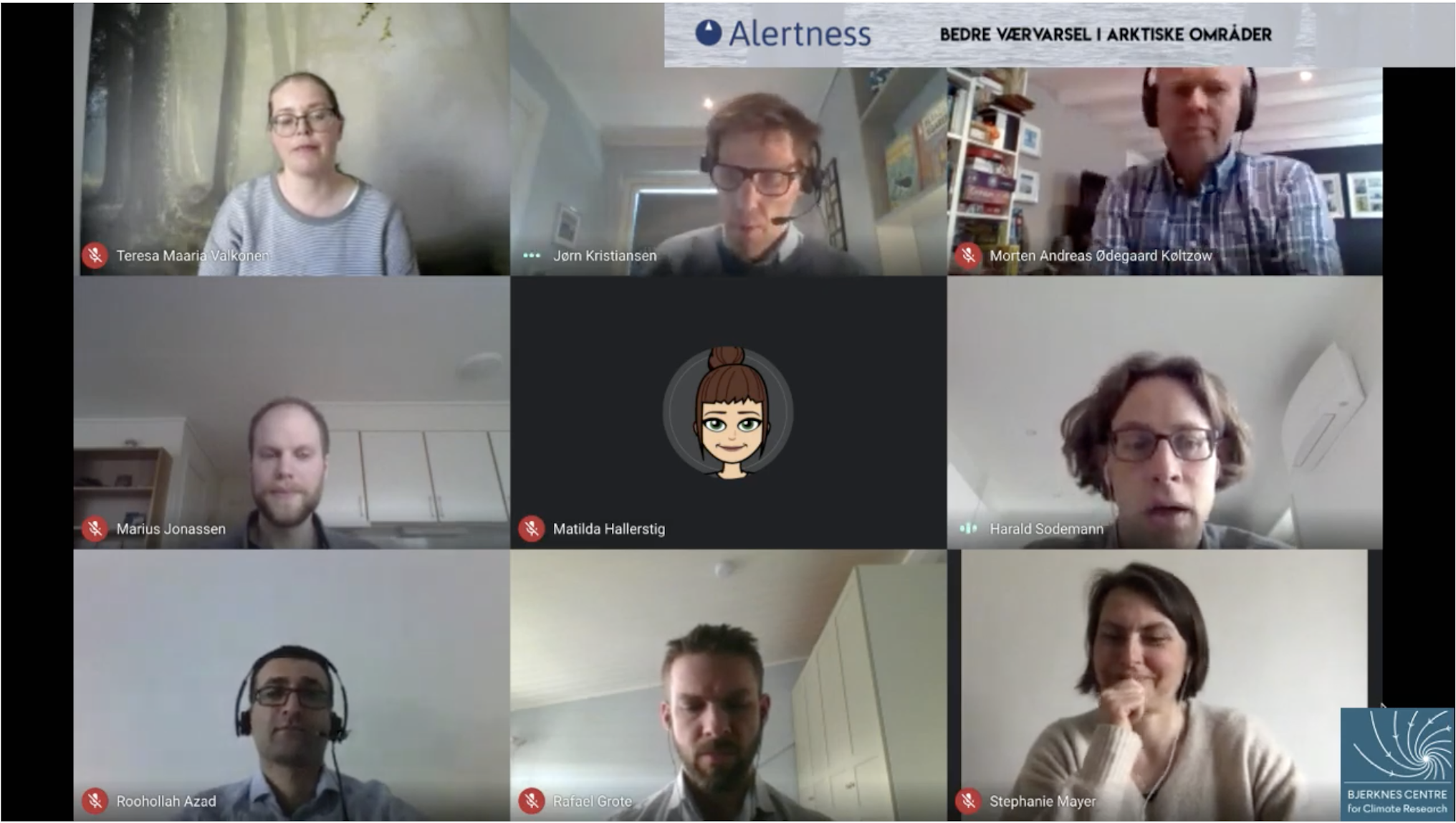Improving weather forecasts in the Arctic
/After the talks, a panel of researchers from The Norwegian Meteorological Institute, The University Centre at Svalbard (UNIS) and the Bjerknes Centre for Climate Research, answered questions from the audience.
By Anna Kathinka Dalland Evans, Communications Department, MET Norway
This article was originally published in the YOPP newsletter PolarPredictNews #15
Special conditions and few available observations provide extra challenges when forecasting weather in the northern regions. How do researchers work with improving weather forecasts in the Arctic?
Close to a hundred viewers followed the open live streaming event when researchers from the Alertness project invited everyone interested to join them in a set of open lectures on this subject on May 27.
The lectures and discussion are available online (in Norwegian).
The event was supposed to have taken place in Longyearbyen at Svalbard, but was moved to an online platform due to the current covid-19 situation.
- People in the north naturally have an extra interest in the weather and in precise weather forecasting, says Marius Jonassen, who lives in Longyearbyen and works at the University Centre in Svalbard (UNIS).
Jonassen is co-lead for the Alertness research project.
- We have a lot of field activities with our students and staff, he explains. - And in this context, precise weather forecasting is extremely important for safety reasons.
The primary objective of the Alertness project is to improve Arctic weather forecasts and warnings, for the benefit of maritime operations, business and society.
Talking about weather forecasting: the online event
The event, which was broadcasted on Youtube, included four short popular science talks, as well as a session where a panel of researchers from The Norwegian Meteorological Institute, The University Centre at Svalbard (UNIS) and the Bjerknes Centre for Climate Research, answered questions from the audience.
Matilda Hallerstig is currently working on a Ph.D. within the Alertness project at NORCE/Bjerknes Centre for Climate Research. She kicked off the online event with her story about how she moved from working as a weather forecaster in the city of Tromsø in the north of Norway, to working with research on improving weather models. A text version in English of this story is available at the popular science website Science Norway.
Marius Jonassen talked about the importance of accurate weather forecasts for students and staff at UNIS and gave examples from field work conducted in Svalbard.
Morten Køltzow, researcher from The Norwegian Meteorological Institute, explained how a weather forecast is made, and why it does not always correspond to the actual weather that people experience.
Finally, project lead for Alertness Jørn Kristiansen from The Norwegian Meteorological Institute explained how the people involved in Alertness work with improving weather forecasts in the north. They work with developing the AROME Arctic model in ways related to data assimilation, sub-grid scale parameterisations and the generation of ensembles.
- I would like to thank everyone who contributed into making this open event a success, Kristiansen says. - An important aspect of Alertness is that academic researchers collaborate directly with operational forecasting centres, and this was presented very nicely.
- Thanks to everyone who gave talks and were part of the discussion panel, and to those who watched the event live online and asked great questions. Also our thanks to the communication department at the Bjerknes Centre for Climate Research for running the technical part of the event smoothly, and to the communication department at the Norwegian Meteorological Institute for help in forming the content of the event.
The article as it appeared in the newsletter PolarPredictNews #15



